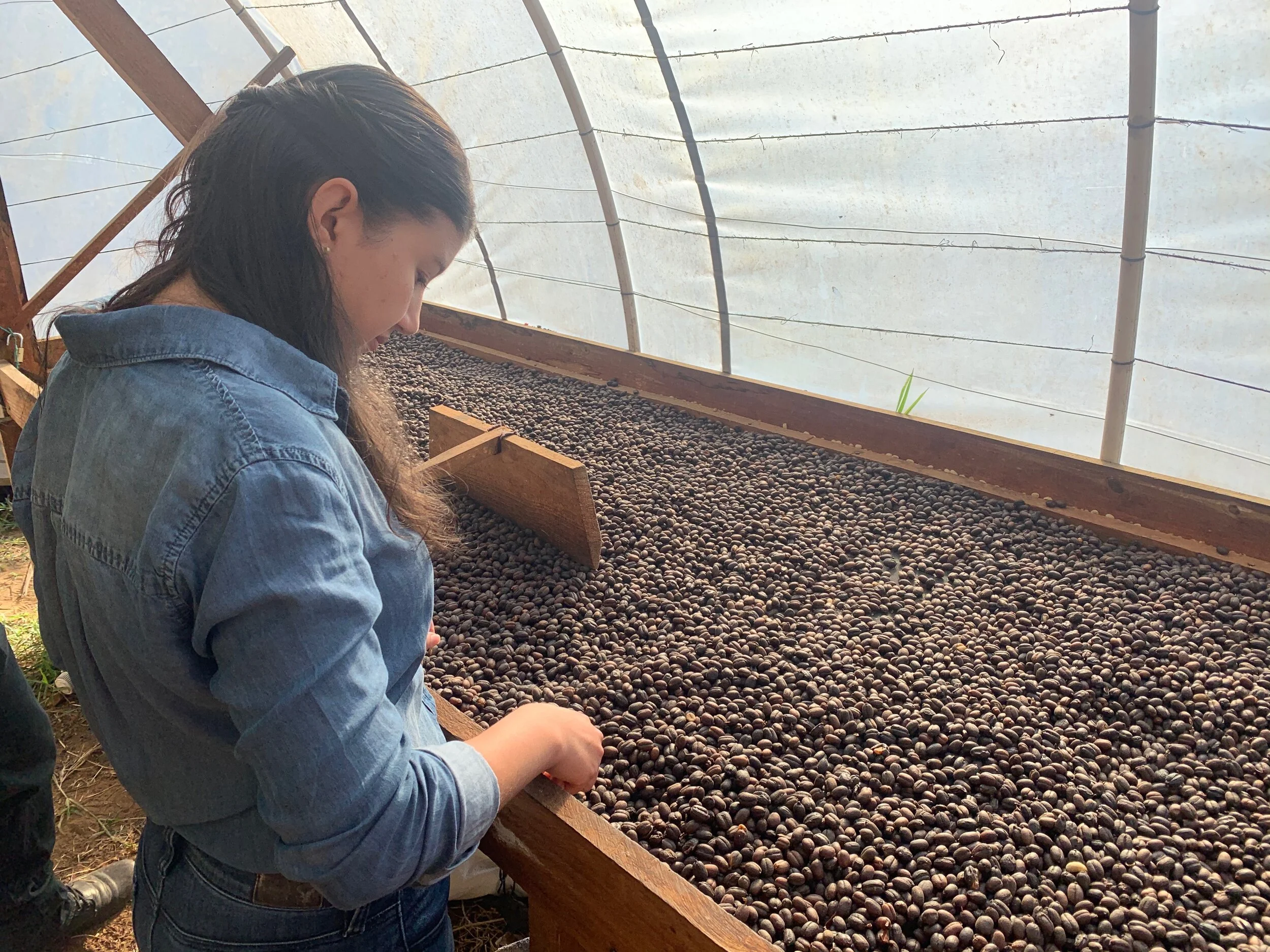What does the process consist of?
This is probably the oldest and possibly also the simplest process. It requires little machinery, but more labor. This method consists of drying the entire bean, without removing the cherry or husk.
How do you get a natural coffee?
The process depends on the producer’s facilities, but generally speaking, it’s as follows:
First, the ripest beans are picked, classified, and cleaned. Beans that are not ripe enough or that have suffered from an insect bite or otherwise, are discarded. This can be done manually or in a separation canal.
Then, the beans are dried either in a patio or on African beds. During the process, they must be raked frequently to assure a homogenous result. Usually, it takes around 20 days to dry the beans to the desired humidity level, but it can take up to four weeks.
This stage is vital for the final quality of the green coffee, and of course for the flavors as well. If the beans end up too dry, they can fissure or otherwise be damaged and will not make it through the next stage of the selection process. But, if the beans are not dry enough, the humidity may attract fungus or bacteria.
Qualities and descriptors
These coffees tend to have a strong body, low acidity, and they often develop exotic flavors and descriptors. It’s common to find winey notes and intense fruits too


